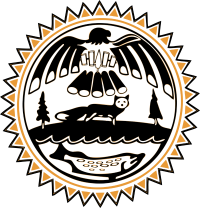
Emerald Ash Borer

The emerald ash borer (EAB) is a shiny green beetle native to Asia. It was first detected near Detroit in 2002. The EAB infests and kills ash trees. Almost all infested trees die within three to five years. 99% of ash trees die within 10 to 15 years from the start of the infestation.
How to Identify Ash Trees:
- Compound leaves (composed of five to 11 leaflets)
- Opposite branching (directly across from each other, not staggered)
- Seeds hang in clusters (dry, oar-shaped “helicopters”)
- Ash bark is smooth on young trees, and ridged on mature trees
- Black ash bark is greyish, flaky and corky

EAB Lifecycle:

Emerald ash borer (Agrilus planipennis). Photo: David Cappaert, Bugwood.org
- Adult emerald ash borers lay eggs on the bark of ash trees
- Larvae tunnel under the bark and feed between the bark and the sapwood
- As they feed, grow and develop into adults, larvae travel in an s-shape pattern, cutting off the nutrient flow and killing the tree.
- Adults emerge from the ash trees in June, chewing a D-shaped exit hole. They feed on leaves, mate, lay eggs, and the cycle starts again.
The emerald ash borer flies in search of ash trees but also spreads via the movement of infested wood. EAB can be present in a tree for up to three years before signs of infestation are noticeable.
Signs of infestation include:
Unfortunately, EAB is present in Kahnawà:ke. Ash trees are very common in Kahnawà:ke and our forests have been greatly impacted by the beetle. Impacts include environmental, aesthetic, economic and cultural, as well as safety concerns from dying and falling ash trees.
Basket by Kahentiio Rice
The EAB infestation is of particular concern to basket makers. The black ash has the unique characteristic of being easily split along its annual growth rings which can be made into splints for weaving. The white ash is used to make basket rims and handles. The loss of our ash trees will have enormous impacts on this important traditional art form.
Responses to EAB:
EAB cannot be eradicated at this time but there is some promising research in this area. KEPO has been treating ash trees in public parks and black ash in the Big Fence since 2018 to help preserve some trees for the future. The EAB has caused the mortality of many ash trees in the community and most trees have signs of infestation. While the borer kills most trees some might be more resistant and linger or survive infestation.
KEPO has been monitored the EAB infestation via sticky traps, carrying out inventories of our ash trees, recording signs of infestations. We have also been planting other species of trees to minimize the environmental impacts from the loss of tree cover in the community. Since 2019 we have been collecting seeds from ash trees and working with the National Tree Seed Center to preserve the seeds for the future. Ash seeds can be preserved for many years if stored correctly. These seeds could be used to replant ash in the community once the EAB passes. We have also established our own seed storage to help preserve ash and other species which could become threatened by invasives or climate change.
Locations and Count of EAB in traps 2016
How to Help:
- Learn to identify ash trees and report ash in seed to KEPO at (450) 635-0600 so we can help preserve the species.
- Do not move firewood. A single piece of infested firewood can destroy millions of trees!
- Plant other tree species to replace the ash trees that will die. It is not advisable to plant ash trees at this time since they will also be at risk of infestation of EAB.
- Contact KEPO for advice if you wish to treat any ash trees on your property. We can provide you with contact information of companies who can assist.